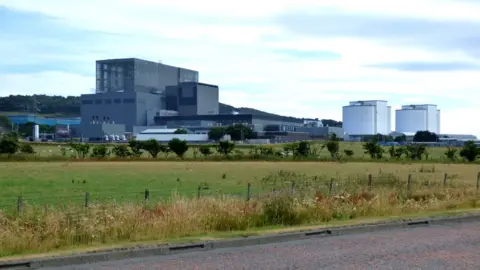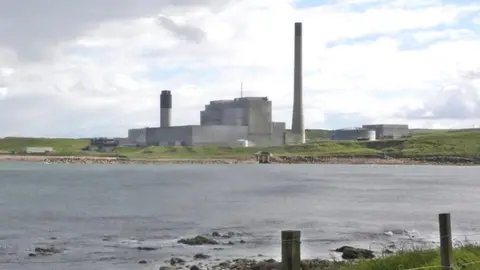Power sector problems see greenhouse gas target missed
 Thomas Nugent/Geograph
Thomas Nugent/GeographProblems in the power sector have seen Scotland's greenhouse gas emissions rise and the 2018 target being missed.
Scottish government figures show source emissions increased by 1.5% largely because of the long-term shutdown at Hunterston nuclear power station.
It led to more electricity being generated at the gas-fired Peterhead power station, where emissions doubled.
A Scottish Government spokesman said it was "disappointing" that the 2018 target was missed.
But he said the figures showed good, long-term progress and Scotland continued to outperform the UK as a whole.
The spokesman said the figures pre-dated substantial action taken by the Scottish government including the declaration of the global climate emergency in 2019 and the passing of Scotland's new Climate Change Act.
However, pressure group Stop Climate Chaos Scotland (SCCS) said the overall increase was "worrying".
Crucial target
The Scottish government has said its targets are "the toughest anywhere in the world".
It has set itself a legally-binding target to cut greenhouse gas emissions to net zero by 2045, five years ahead of the date set for the UK as a whole.
The two nuclear reactors at Hunterston B in North Ayrshire were closed down in 2018 after cracks were found in the reactors' graphite core.
Despite a continued rise in the use of renewables, a greater demand for gas meant overall emissions from the power sector increased.
Transport remains the single biggest source of emissions, followed by business and agriculture.
Source emissions are down 45.4% since 1990 but adjusted emissions, which are used against the Scottish government's targets, fell by 50%.
 Roger Cornfoot/Geograph
Roger Cornfoot/GeographHowever, that fell short of the 54% target set out in new legislation which was passed last year.
Jess Cowell, from Stop Climate Chaos Scotland, said: "If the government is going to meet the crucial target of a 75% reduction in emissions by 2030, we need to see action to reduce emissions showing up in significant declines in these figures."
She added that the burning of fossil fuels was "the key driver of the climate crisis" and called on the government to deliver "a decisive, just transition that ends our economic dependence on fossil fuels".
Ms Cowell said that must "protect employment and secure social benefits for the communities who will be impacted by industrial change."
'Climate breakdown'
Scottish Green environment spokesman Mark Ruskell said: "This is what happens when politicians congratulate themselves over targets but won't commit to serious action to meet them.
"This is a climate emergency, and instead of cutting emissions Scotland continues to hurtle towards climate breakdown."
A spokeswoman for Hunterston operator EDF said it was continuing to work constructively with the regulator to secure permissions required to restart generation at the nuclear reactor site this summer.
However, Hunterston B is scheduled to be permanently closed down in 2023, when it moves into the defuelling stage.
The life of the Torness nuclear power station in East Lothian, also operated by EDF Energy, has been extended to 2030.
